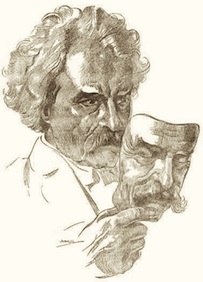
[DRAFT]
Length 3-4 typed, double-spaced pages (750-1000 words, but can be longer if you wish)
February 7: Typed rough draft due in class
February 9: Paper due at beginning of class if you are turning in a paper copy OR uploaded to Angel by 9 p.m. if you are turning in an electronic copy.
Guidelines
- The first paper does not require research, although secondary sources may be helpful. Rather, its purpose is to demonstrate your ability to choose a significant, appropriately limited topic in American literature; to investigate and support a thesis of your own devising; to analyze with skill and insight the evidence from specific literary works; and to present the whole in a clearly organized, well-written fashion.
- The essay should incorporate at least one work read in class. You may choose your own topic for the paper if you consult with me ahead of time.
- Your paper should be limited enough to provide a specific thesis and a close analysis of the texts; repeating broad, obvious generalities (i.e., "Women were limited by society's expectations in the nineteenth century") or ideas we have discussed in class will not be sufficient.
- Content is very important, but good organization, sentence structure, and editing skills are also important. Citations and the Works Cited page should follow MLA format. More guidelines for turning in papers in this class are here: http://public.wsu.edu/~campbelld/format.htm. You can find good information on citing sources online here: http://bcs.bedfordstmartins.com/resdoc5e/RES5e_ch04_o.html
Topics
These topics are broad and are meant to suggest ideas to you; you should think about developing your own ideas using these as guidelines.
1. The evasive "I": narrative technique and point of view in The Blithedale Romance or Moby-Dick. What is the effect of first-person narration in one or both of these books? In what way does it multiply or complicate the novels' themes? What does the first-person narrator expose, explain, or conceal?
2. The Blithedale Romance and Moby-Dick examine the idea of the "foreign" versus the "familiar"; that is, they explore their protagonist's fears about, and sometimes acceptance of, characters of another race, culture, or religion. Examine this idea in any one or two of the novels. You might also choose to examine the way in which characters of a particular race or ethnicity are portrayed in the work.
3. In a famous essay on The Blithedale Romance, Philip Rahv argues that Zenobia is one of Hawthorne's "dark ladies," as is Hester in The Scarlet Letter, Beatrice in "Rappaccini's Daughter," and Miriam in The Marble Faun. Rahv contends that Hawthorne treats these characters unjustly and that "inevitably the dark lady comes to a bad end while the blond is awarded all the prizes." Would you agree with this assessment? What attitudes in literature or in nineteenth-century American culture does it reflect? Choosing one other work, consider Zenobia and The Blithedale Romance in light of these ideas.
4. Examine closely a single pattern or a few closely related patterns of images or themes in The Blithedale Romance or Moby-Dick. See the "Reading Questions on Moby Dick" handout for suggestions.
5. Choose one of the chapters in The Blithedale Romance or Moby-Dick and, through close reading, show the ways in which it exemplifies or relates to the book as a whole.
6. Compare and contrast two characters who act as foils for each other, making sure that you discuss any interactions that they might have.
7. In what ways do some or all of these novels critique idealism, or, more specifically, characters who pursue their own ideals at all costs?
8. Your own topic. Some of you have already sketched out some interesting ideas in your weblogs; choose one that might lend itself to further discussion and develop it into a paper.